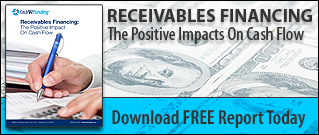 How is Factoring Receivables different from Asset Based Lending? Part 1
How is Factoring Receivables different from Asset Based Lending? Part 1
I just got off the phone with an investment banker who wanted to understand the differences between factoring receivables and asset based lending. I thought that this question would be a good basis for a series of blog posts.
In the broadest sense of the term, asset based lending is the category of commercial finance of which factoring receivables is a subset. Asset based lending is a type of finance where the structuring and underwriting of a loan is based on the expected liquidation value of the business assets being leveraged.
When most people use the term, asset based lending, they are referring to a type of revolving credit facility where a business borrows against the liquidation value of their accounts receivable, inventory, property plant and equipment and sometimes intangible assets like intellectual property.
Factoring receivables is different in that the company is typically only able to generate near-term cash flow by accessing the value embedded in their accounts receivable.
To learn more about factoring receivables electronically and paperlessly with Fast A/R Funding click the link below.
The following is brief list of the most important aspects of an asset based lending facility:
- Size - Facility size for asset based lendings vary from as low as $500,000 to as high as several billion dollars.
- Collateral - All business assets
- Recourse - Depending on the financial strength of the corporate borrower, the lender may, or may not require the personal guaranty of the majority owners of the business.
- Customer Notification - The borrower's customers are not notified that the lender has taken a security interest in the assets of the business. Customers of the borrower are asked to make payment to the borrower at a PO Box controlled by the lender.
- covenants - Most asset based lending facilities have tight loan covenants including minimum cash flow, and maximum leverage.
- Reporting - Borrowers are expected to submit borrowing base certificates at least monthly, that summarize the current value of the company's assets. Borrowers are required to supply the lender with monthly financial statements. Most lenders require quarterly field exams where the lender's personnel visit the borrower to examine the books and records.
- Pricing - Annual percentage rates anywhere between LIBOR plus 2 percent to as high as 30%.






